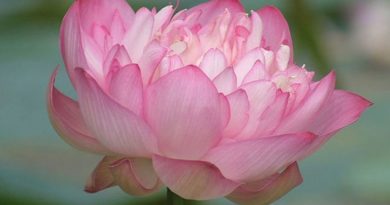THE PATTHANUDDESA DIPANI – CHAPTER 28: SYNCHRONY OF RELATIONS
THE PATTHANUDDESA DIPANI – CHAPTER 28: SYNCHRONY OF RELATIONS
There are twelve classes of immoral consciousness: two rooted in nescience, eight rooted in appetite, and two rooted in hate. There are fourteen immoral mental properties: moha (dullness), ahirika (shamelessness), anottappa (recklessness of consequences), and uddhacca (distraction)–these four are termed the moha-quadruple; lobha (greed), ditthi (error), and mana (conceit)–these three are termed the lobha-triple; dosa (hate), issa (envy), macchariya (selfishness), and kukkucca (worry)–these four are termed the dosa-quadruple; thina (sloth), middha (torpor), and vicikiccha (perplexity)–these three are termed the pakinnaka triple. Of these, the three roots–greed, hate, and dullness–are hetu relations. Error is a magga relation. The remaining ten mental properties do not become any particular relation.
Here, the two classes of consciousness rooted in dullness are: consciousness conjoined with perplexity, and consciousness conjoined with distraction. With the first of these two, fifteen mental concomitants coexist. There are the seven universals, initial application, sustained application, effort (from the particulars), the moha-quadruple, and perplexity (from the immoral’s). They make up sixteen mental states in combination with consciousness. In this consciousness, i.e. the consciousness conjoined with perplexity, the relations of hetu and magga are also obtained. That is, dullness acts as the hetu relation; initial application and effort as the magga; and, as to ekaggata, as its function would be interfered with by perplexity, it does not perform the functions of indriya and magga, but it does the function of jhana. Therefore, the three relations (adhipati, pacchajata, vipaka) are not obtainable; and the remaining twenty-one are obtainable in this consciousness, which is conjoined with perplexity.
In consciousness conjoined with distraction, there are also fifteen mental properties–omitting “perplexity” and adding “deciding”. They also make up sixteen mental states together with the consciousness. In this consciousness, ekaggata performs the functions of indriya, jhana and magga. Therefore, three relations are not obtainable, whereas twenty-one are obtainable.
Seven universals, six particulars, the moha-quadruple, the lobha-triple, sloth and torpor–altogether twenty-two in number, severally coexist with the eight classes of consciousness rooted in appetite. Among these, the two roots–greed and dullness–are hetu relations; and the three mental states–desire-to-do, consciousness itself and effort–are adhipati relations. Arammanadhipati is also obtained here. Volition is the relation of kamma. The three foods are the relations of ahara. The five mental states: mind, sensation, ekaggata, psychic life and effort–are relations of indriya. The five jhana factors, i.e. initial application, sustained application, pleasurable interest, sensation, concentration, are jhana relations. The four magga constituents, i.e. initial application, concentration, error, and effort, are magga relations. Therefore only the two relations (pacchajata and vipaka) are not obtained. The remaining twenty-two are obtained.
[End of the Synchrony of Relations in the Immoral Class of Consciousness]









